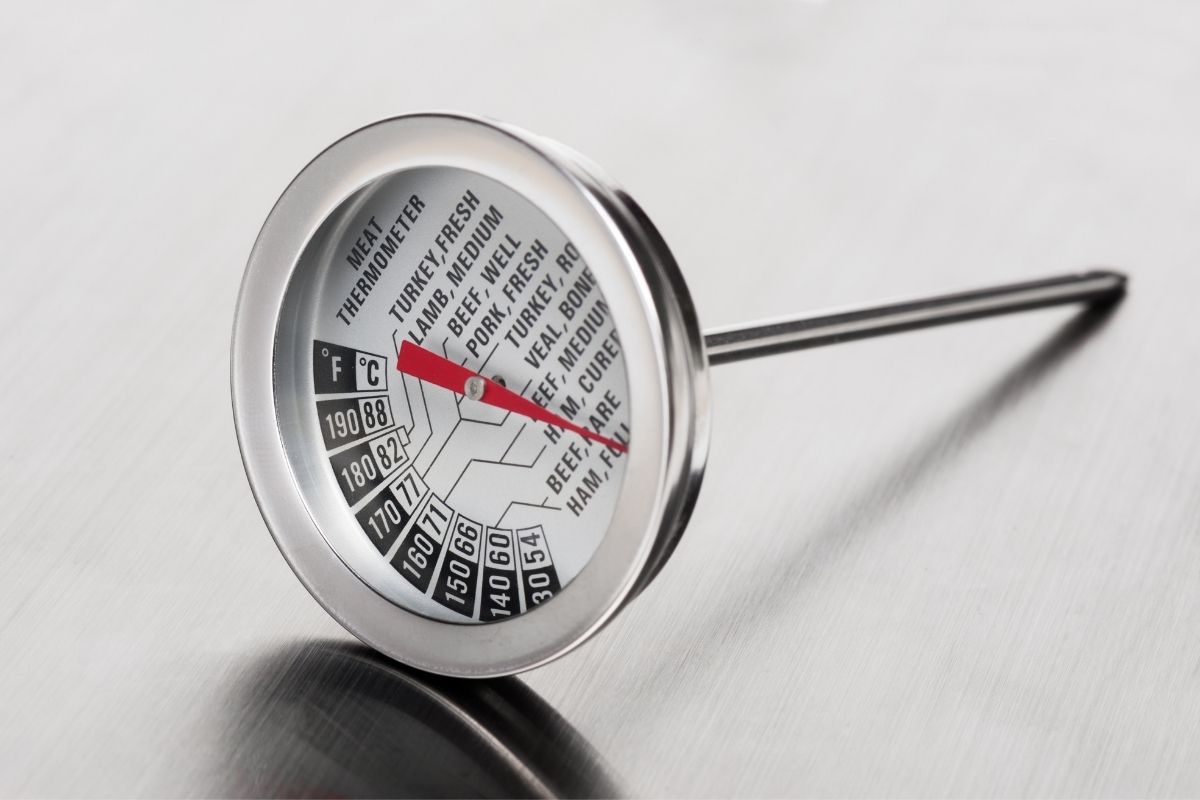What Do The Readings On A Good Cook Meat Thermometer Mean?
Good Cook meat thermometers are a common kitchen appliance and a fantastic analog way to check the temperature of various meat products.
Even if you don’t think you own a meat thermometer, you can still find them in a lot of kitchens because of how widely available and high-quality they are.
The main information you need may be fairly easy to see on the small interface of these traditional meat thermometers, but you might be left wondering what the other visible information means.

Knowing the meaning of the various symbols and readings at the bottom will help you use this tool much more effectively.
The black and red bars on the bottom half of the thermometer may leave you with more questions than answers even though the internal temperature on the top half of the thermometer is fairly simple to understand.
Beef, pork, and lamb will be grouped in the red row, which is almost always on the bottom, while ham and poultry will be grouped in the black row, which is almost always above it.
These readings serve as cues to the cook about the readiness of various types of meat.
The meat has therefore been properly cooked and is safe to eat when the needle on the thermometer’s bottom half points to or passes over a different type of meat.
With recent updates to the newer varieties of Good Cook meat thermometers, which do away with the colored needle tips to distinguish between the various readings, this has become a little more perplexing.
The needle on the more recent iterations of a Good Cook meat thermometer will be black on both ends and have a bulbous shape at the bottom.
However, it is not always completely accurate, and if you want to cook the meat to a specific temperature, more accurate methods of measuring this are advised. The temperature of the inside of the meat is still on top and the degree of how well done the meat is on the bottom half
Now that you are aware of what the various readings on a Good Cook meat thermometer indicate, let’s move on to how to use one.
Operating the Good Cook Meat Thermometer
You may have noticed that this thermometer reads temperatures rather slowly. This is due to the fact that the device is a straightforward bi-metallic analog thermometer that measures the average temperature along the probe’s length.
The Good Cook Precision Classic Meat Thermometer measures more than 4 inches in length. That’s a sizable area and the temperature measurement there is not at all accurate. The probe’s bi-metallic measuring process is the cause of everything.
This means the thermometer has a bi-metallic strip inside the probe end. The two metals (usually steel and copper) expand at different temperatures, causing this strip to twist.
The bi-metallic strip slowly rotates a shaft with a needle attached at the end when heated. Compared to a good digital meat thermometer, which can typically read the temperature in a few seconds, this temperature reading process takes a lot longer.
Additionally, and perhaps most importantly, a digital meat thermometer will provide an accurate reading at the probe’s tip rather than over an area of inches. Goodbye dry meat.
It can be challenging to see exactly where the needle on an analog thermometer like this one is pointing. The dial is set up in 2-degree increments. Sometimes only a few degrees separate a juicy roast from a dry roast.
The temperature doneness scale at the dial’s bottom is the most perplexing feature of this particular thermometer, which is probably why you’re reading this.
Check out my review of the ThermoPro TP28 Long Range Wireless Remote Meat Thermometer if you’re looking for a reliable thermometer.
What type of meat thermometer is best?
The best meat thermometers, whether digital or analog models, have a thin enough probe to prevent damage to the meat and are quick and accurate. But they fall into two general categories:
Instant-read thermometers
These are inserted toward the end of cooking and come in a variety of styles to check the internal temperature of the meat in one or more locations.
